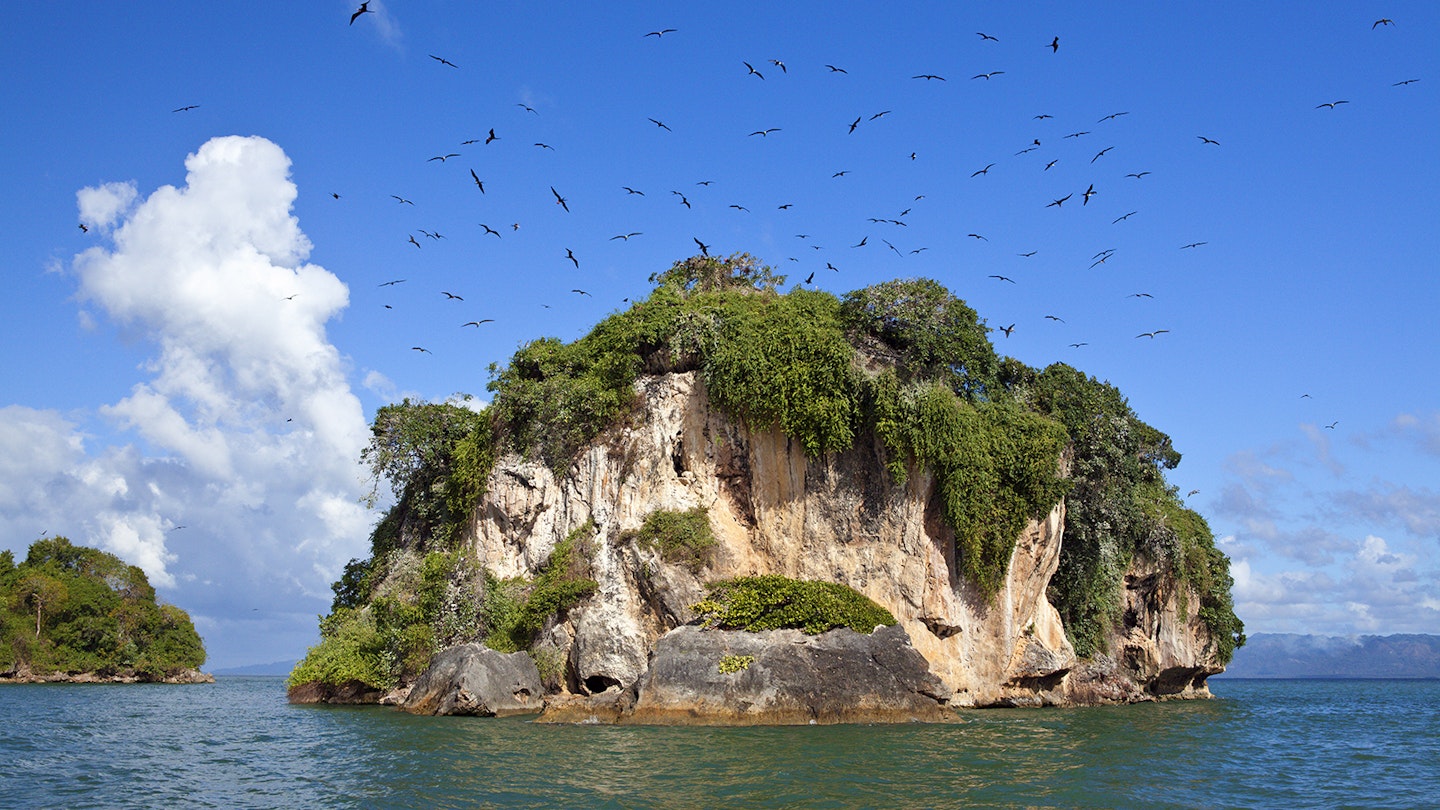Discover the Hidden Gems of the Dominican Republic
The Dominican Republic is well known for its blissful beaches: the crystal clear waves of Punta Cana, the eye-catching turquoise waters at Bahía de las Águilas, and the deep blues of the Atlantic lapping at golden sands on Samaná Peninsula.
While all are fantastic stops on the island, the DR has a beating heart full of outdoor adventure, colonial and indigenous history, and cool mountain breezes that often get overlooked. Here are some must-try experiences that go beyond the beach.
Los Haitises National Park
A trip to Los Haitises offers more than just a day in the sun; it provides visitors with a crash course in the region’s ecological and cultural history. Lined with a string of 58 small, jagged islets worn by salt, wind, and rain, the national park appears almost prehistoric. Yawning cave mouths gape open on several of the small islands, while massive pelicans roost on the rocks and lithe herons skim the water’s surface.
Visitors can hop off their boats to explore a series of caves used by the indigenous Taíno as ceremonial grounds—carvings and pictographs cover the walls, and massive stalactites dangle overhead. The park is also home to a complicated network of mangroves, and many outfitters offer kayaks so you can get a closer look. Samaná Peninsula is home to numerous hotels and businesses offering tours to the park, including Escape Tours Samaná, so you won’t be short on booking options.
Visit the Waterfalls at Damajagua
If you are a bit farther northwest, make sure to visit the twenty-seven waterfalls at Damajagua. Here, you can slip n’ slide down the rushing waters into beautiful blue-green natural pools. You must visit with a guide; several tour operators in Puerto Plata, Sosúa, and Cabarete offer trips to the falls, with options to stop at various heights. You’ll also find a restaurant and visitor center at the entrance to the site.
Experience the Highlands
If you are looking for an escape from the Caribbean heat, head to the central highlands for a breath of mountain air. Jarabacoa and Constanza are the region’s most popular stop-offs, and travelers will be rewarded with views of gorgeous green hills, flower farms, and plenty of roadside eateries selling the Dominican arepa, essentially a giant, dense corn cake. For adrenaline junkies, whitewater rafting or canyoning trips down the Río Yaque del Norte are highly recommended. Alternatively, enjoy the sweeping vistas of the valley from the rotating restaurant at Aroma de la Montaña or relax with beverages in the central parks that come alive on weekends.
Discover History in Santo Domingo
History buffs rejoice: Santo Domingo’s Zona Colonial is a UNESCO World Heritage site filled with striking, preserved Spanish colonial architecture. Not only are the structures abundant, but they also include some of the oldest European buildings in the Americas, as the island of Hispaniola (now the Dominican Republic and Haiti) was Columbus’ very first settlement.
It’s easy to take your own walking tour through the cobblestone streets to see the Catedral Primada de América, the ‘New World’s’ oldest operating church, the Fortaleza Ozama, its oldest colonial military structure, and the Ruinas del Hospital San Nicolás de Bari, its first hospital. You can even stay at the Hostal Nicolás de Ovando, a charming hotel that was actually home to the island’s first Spanish governor.
Cigar Tours in Santiago
The hand-rolled Dominican cigar is an art form, and many of the world’s top brands are produced in the rolling green hills around Santiago de los Caballeros, the country’s second-oldest city. Several factories are nestled at the base of the Cordillera Septentrional in the small town of Tamboril, northeast of the city, and most offer tours. Visit La Aurora Parque Industrial to learn about the cigar-making process and snag a few stogies for yourself.
Bonus Travel Tip: Santiago hosts one of the nation’s most extravagant Carnaval celebrations; lechones, colorful horned characters representing the city’s neighborhoods, fill the streets along with others in extravagant costumes. If you’re in the area during late February, don’t miss this vibrant festival.
Article updated June 2019.





